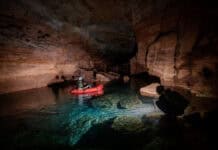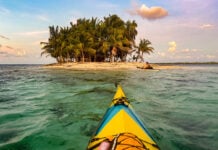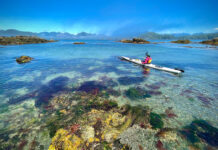Cartographers like Dan Coe battle the notion that everything on the planet has already been mapped. “The world is always changing and is full of new data and phenomena that can be visualized most effectively with maps,” insists Coe, a paddler and geographer based in Olympia, Washington. “Maps offer a sense of discovery and exploration. If you know how to interpret them well, the effect is akin to reading a great adventure novel.”
This mapmaker exposes the secret histories of rivers
Coe was inspired to take up mapmaking after working as a sea kayak guide in Alaska and Oregon. He studied geography at Portland State University, where he says his “interests in the outdoors, geography, and art coalesced into a mapmaking career.” As a profession, he develops technical maps for the Oregon and Washington state geological services. But Coe is also drawn to the art of mapping rivers—in part from his own experiences paddling waterways like the Willamette and Columbia in the Pacific Northwest.
Eight years ago, Coe started experimenting with light detecting and ranging (LiDAR) imagery to make river maps. This super precise data is collected by low-flying aircraft, which collect terrain information using radar, ultimately to create detailed three-dimensional models of the Earth’s surface. The technology is widely used to manage natural resources and agriculture. But Coe proves it has an artistic upshot as well.

“You can digitally remove all of the vegetation and buildings on the surface of the model and only view the bare ground,” he explains. “With that bare-earth surface, you can see where rivers have meandered in the past by adjusting colors and shading to visualize subtle changes in elevations. These often show up as ghost channels in a floodplain’s topography, which indicate where a river used to flow.”
Coe applies color gradients in rendering his digital maps, typically with the lightest color marking the river’s surface and progressively darker shades representing higher elevations. “I tend to use bright, saturated colors since I’m only representing one visual variable (elevation),” he says. “I love art that is visually bold and intriguing.”
The results are flashy and distinctive fusions of art and science, which have been compared to networks of veins and arteries, lightning bolts, plumes of smoke and tree roots by viewers. Coe’s maps also help explain how rivers continuously shape the earth’s surface.
“These images are great snapshots of how rivers erode and deposit sediments over time and how these processes create various landforms along a river’s course,” he notes.
Of the more than 200 rivers Coe has mapped so far, his favorite is the Dee River estuary on the border of England and Wales. Many sea kayakers have experienced the constant flux of land and water in the deltas and estuaries of coastal areas, as tides and freshwater currents interact to form ever-changing environments. Where the Dee meets Liverpool Bay on the Irish Sea, “the elevation range is all within a few meters,” Coe explains. “But the visual effect of those subtle changes is exquisite.”
Coe isn’t worried about running out of rivers to map. This year, he’s launching a new business called Meander and Flow Design, focusing on river cartography. “My hope is to continue to make these kinds of images for many different purposes, including film, print, digital, museum, and gallery projects,” he says. “New technologies like LiDAR allow us to map living rivers in ways that not only show their current state but also show clues and evidence about how they have moved and changed over time. This appeals to me as a cartographer, as a boater, and as a curious human.”
Find more of Daniel Coe’s work at dancoecarto.com.
“The fact that many river forms are whimsical and visually intriguing makes them perfect subjects for this kind of creative mapping,” says cartographer Dan Coe. Pictured here are the Porcupine and Draanjik rivers in Alaska. | Feature photo: Dan Coe
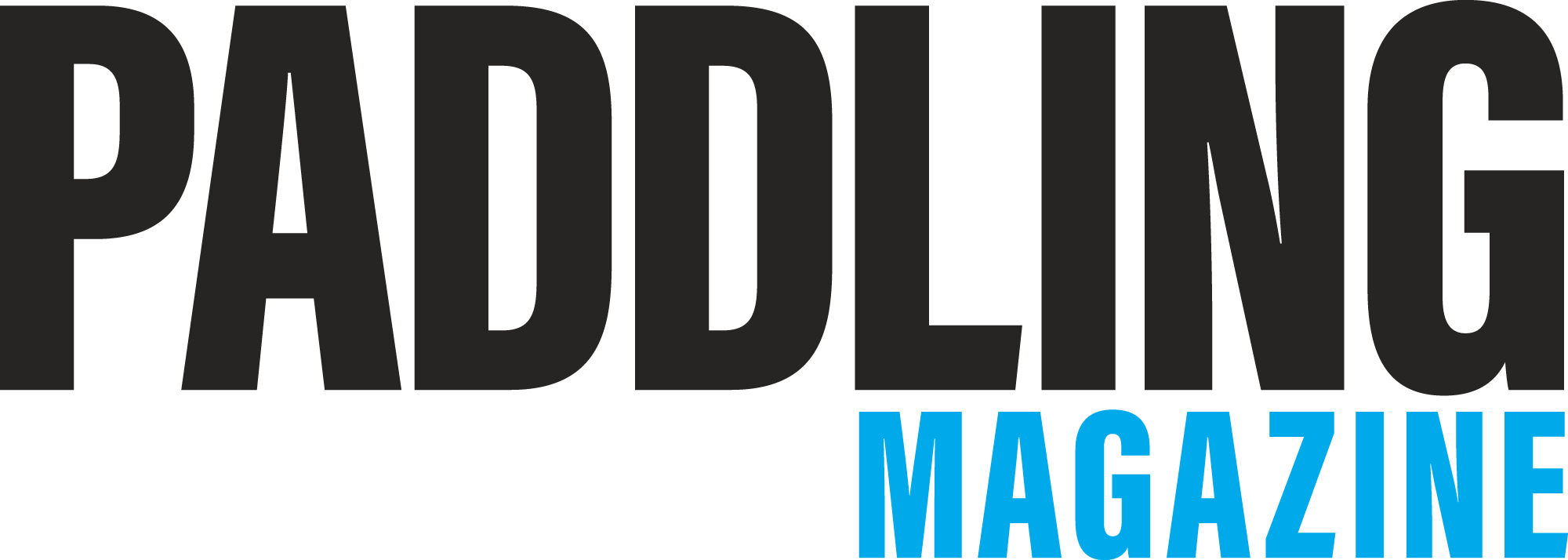

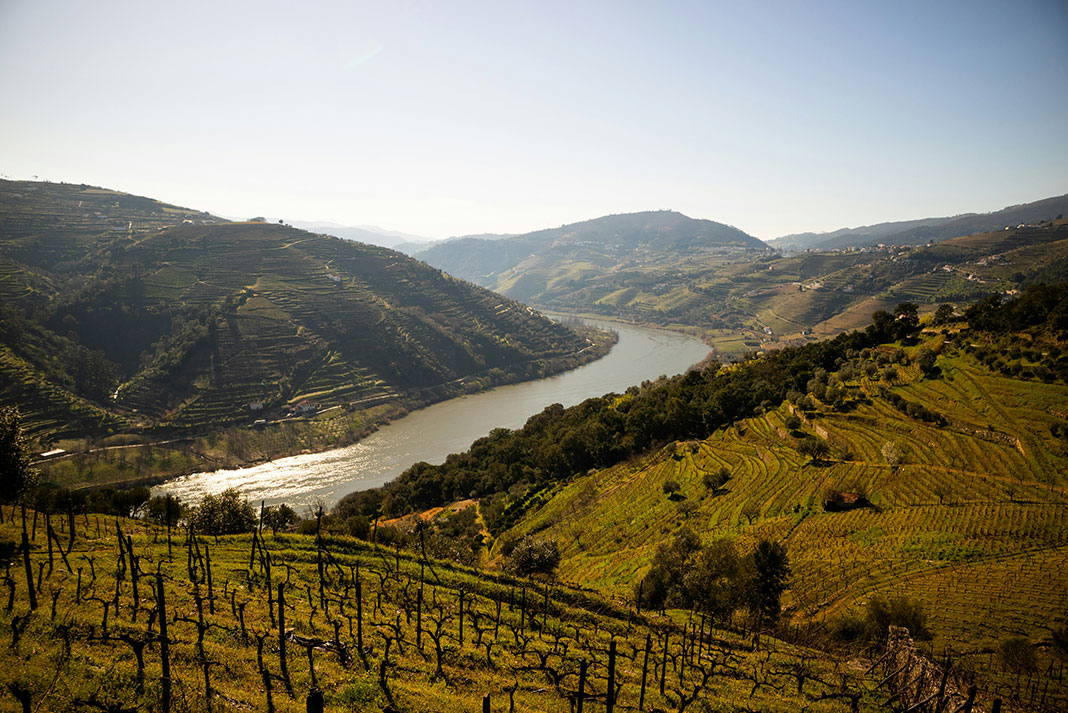
 This article was first published in Issue 73 of Paddling Magazine.
This article was first published in Issue 73 of Paddling Magazine. 